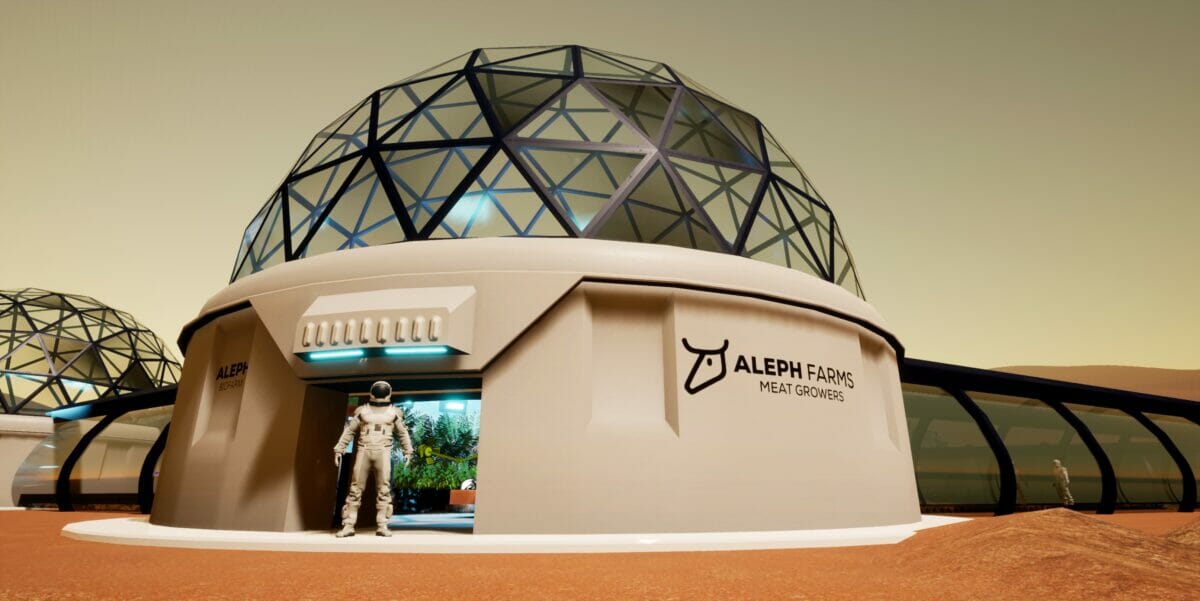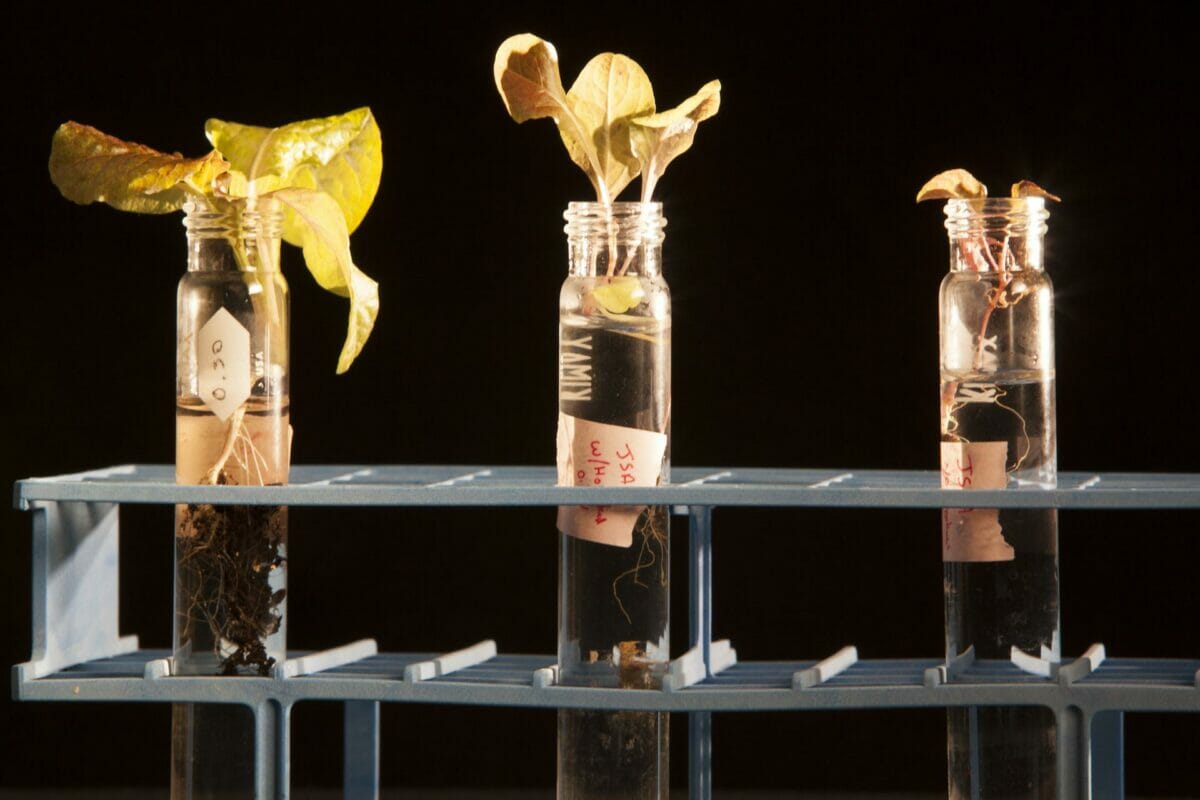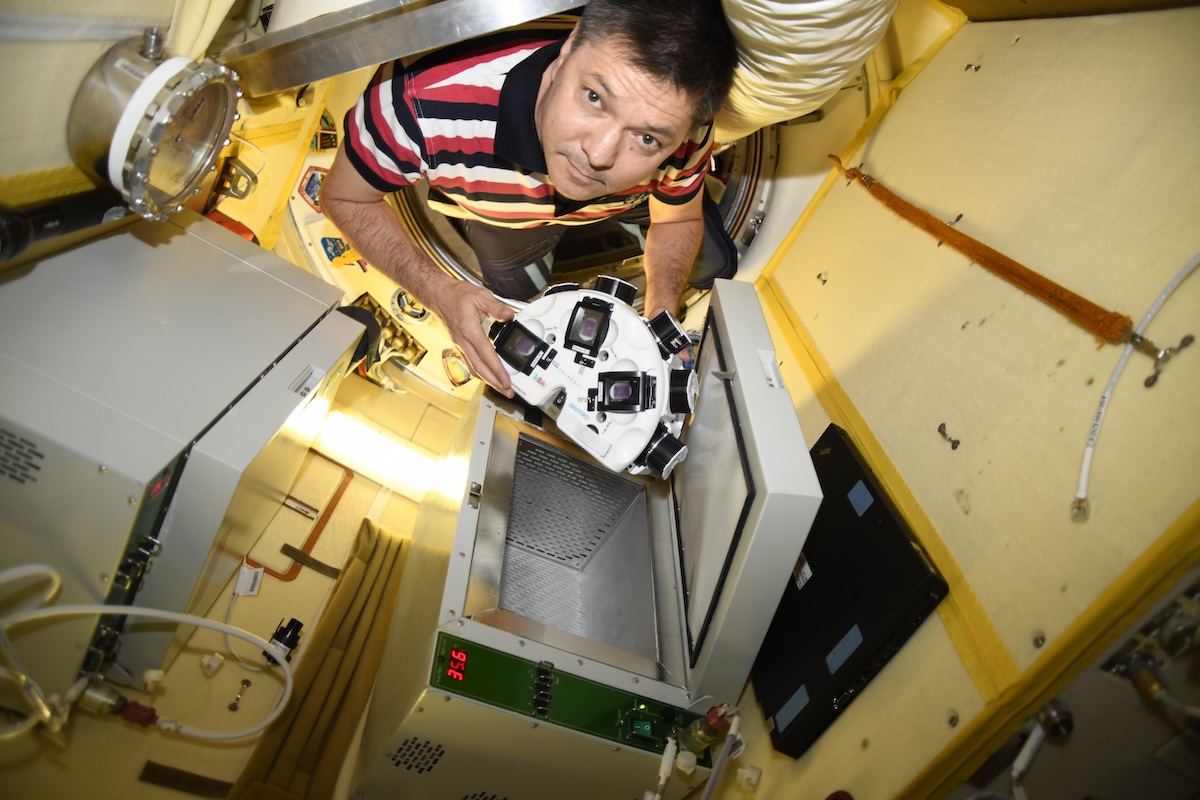The Future of Farming in Space
Why companies are looking beyond Earth for viable farmland.
The Future of Farming in Space
Why companies are looking beyond Earth for viable farmland.

The Israeli-based Aleph Farms is looking to other planets for future farmland.courtesy of Aleph Farms.
As the global amount of arable land steadily decreases, some scientists and entrepreneurs are looking to the stars as the next great agrarian frontier. A concept as old as the first science fiction story, humanity’s escape to a life in space hinges on the ability to produce edible and nutritious food.
Growing plants in space is not a new experiment. Astronauts and scientists have already had success cultivating fruits and vegetables in space, such as ‘Armara’ mustard and pak choi. Last fall, seven mature Hatch green chiles were harvested. Speaking to the future of luxury space travel, a dozen bottles of Bordeaux were sent to age in space for 14 months before returning to be sold in a Christie’s auction.
A cacophony of recent events has further propelled the interest—and investment—in growing food in zero gravity, including a decrease in arable land, the failure of crops on land due to extreme temperature and weather events and the growing likelihood of human-guided trips to nearby planets in the solar system.
Now, a number of different companies are stepping up, hoping to lead the food production industry up the runway to space.

Normalizing terrestrial food production
Orbital Farm is one company looking to the future. Still in a fledgling state, Orbital Farm hopes to transform terrestrial food production into a sustainable closed-loop system, making the eventual leap to space-grown produce an easy obstacle to overcome. CEO and founder Scot Bryson says that his company was born out of the desire “to tackle climate change.” And this makes sense. As climate change progresses, weather patterns will become more unpredictable and erratic, placing crops around the world in danger. These impacts will only intensify, says Bryson, due to the fact that nearly 26 percent of greenhouse gas emissions are released by the agricultural sector alone.
To combat this effect, Bryson is looking to open completely closed-loop farms or self-contained greenhouses that convert waste material into energy. The company envisions this involving fresh fruits and veggies but also clean energy, fish, biopolymers, medicines, vaccines and cellular agriculture.
Beginning with a facility at the Virgin Galactic Spaceport America in New Mexico, Orbital Farm will work to integrate the mechanizations of industrial, large-scale agriculture within a sustainable system. This includes simulating the environment to mimic space conditions, including limited access to freshwater and oxygen, as well as building and continuously testing air carbon capture systems. Bryson says this is the only way forward, because “fifteen, twenty years from now, when we have large numbers of people living…on Mars, you need large-scale systems to support life.”
In that vein, chickpeas are already beginning their testing trial in space. An experiment named “Space Hummus” commenced with Northrop Grumman’s 17th supply mission to the International Space Station (ISS) on February 19. Yonatan Weintraub of Stanford University, the scientist who developed the plan for Space Hummus, cites the nutrient- and protein-dense nature of the legume as a leading factor to explore its potential for growth in space. Housed in a miniature greenhouse, chickpea growth will be monitored by scientists aboard the ISS.

Zero-gravity cell-cultivated meat
Back down on Earth, Aleph Farms, based in Rehovot, Israel, is also betting on food grown and cooked among the stars, but not just vegetation. Well known for cultivating the first piece of meat in space, Aleph Farms has out-of-this-world plans for future proteins. Zvika Tamari, head of the company’s space research program, believes that cell-cultivated meat will become an integral aspect of long-duration missions to Mars and potential Moon outposts. “Supplying fresh food from Earth to the Moon and Mars…is just not going to happen,” says Tamari. So Aleph Farms is determined to make cultivating and cooking meat in space a plausible reality for the future of space travel.
In lieu of attempting to blast a cow to the moon, Tamari says that Aleph Farms is working in partnership with the ISS to “examine the effect of microgravity on…cell proliferation and differentiation.” Cell proliferation and differentiation act as the foundation for all muscle tissue formation, so understanding the impact that a lack of gravity has on these two processes is crucial to normalizing the practice of meat grown in space. While the astronauts on the ISS conduct these experiments, analysts will monitor the progress from Earth, reacting and editing theory and practices in real time. All of this is to say that the future of growing meat in space for long-term missions is no longer a concept regulated to our favorite episodes of Star Trek but rather a real viability gaining steam and traction.
Additionally, Tamari briefly touches upon the psychological impact of long-duration space travel, bringing up the idea that astronauts visiting Mars will undergo years in space and may ultimately never return to Earth. Acknowledging this mentally and emotionally draining possibility, he posits that “the ability to be involved in preparing your own [food] and growing it and seasoning it by your taste…is extremely important for the well-being of astronauts.”
NASA seems to agree with Tamari’s take. Isolation and confinement are ranked second among NASA’s list of five hazards of human spaceflight, with the agency acknowledging that a lack of access to consistent fresh food could contribute to “psychological or physical imbalance.” So the market for technology that can provide fresh and tasty food in space is more important than ever.
A new Space Race
Aleph Farms and Orbital Farm both agree that the more diverse a set of minds working toward growing food in space, the more likely it is that humanity will be able to solve pressing food-related dilemmas—both on the ground and in space. Food security and dwindling resources, both accelerated by the climate crisis, are posing challenges for the future of food production. Many believe that to grow food successfully in space, humanity must simultaneously understand the practice of sustainable food production on Earth.
To this end, NASA and the Canadian Space Agency recently announced the second leg of the Deep Space Food Challenge, a competition with a $1-million dollar prize that seeks sustainable food technology for use in both terrestrial and inter-planetary settings. Boasting the tagline “Good food for healthier, happier humans in space and on Earth,” NASA is challenging teams from all over the world to submit cutting-edge ideas that could sustain long-duration space missions and improve the environmental impact of food production on Earth, increasing access to sustainable food. Phase 1 winners include ideas such as Bistromathic from Austin, Texas, a potential technological option that “ensures astronauts enjoy an Earth-like experience of eating during long space missions,” or SIRONA NOMs from Golden, Colorado, a “small-scale bioregenerative system that grows a variety of fruits, vegetables, herbs and fish.”
Moving forward, we can expect to see innovative technologies that will usher in the next 50 years of sustainable food production in space and at home. Experts from around the globe are exploring new and exciting methods to grow many food options in any environment. However, the future of intergalactic food is entirely dependent on Earth in the present day: Humanity needs to understand how to grow more with less. Only upon mastering this conundrum can we expect to explore the Milky Way while enjoying a kale salad and beef tartare.
Follow us
This work is licensed under a Creative Commons Attribution-NoDerivatives 4.0 International License.
Want to republish a Modern Farmer story?
We are happy for Modern Farmer stories to be shared, and encourage you to republish our articles for your audience. When doing so, we ask that you follow these guidelines:
Please credit us and our writers
For the author byline, please use “Author Name, Modern Farmer.” At the top of our stories, if on the web, please include this text and link: “This story was originally published by Modern Farmer.”
Please make sure to include a link back to either our home page or the article URL.
At the bottom of the story, please include the following text:
“Modern Farmer is a nonprofit initiative dedicated to raising awareness and catalyzing action at the intersection of food, agriculture, and society. Read more at <link>Modern Farmer</link>.”
Use our widget
We’d like to be able to track our stories, so we ask that if you republish our content, you do so using our widget (located on the left hand side of the article). The HTML code has a built-in tracker that tells us the data and domain where the story was published, as well as view counts.
Check the image requirements
It’s your responsibility to confirm you're licensed to republish images in our articles. Some images, such as those from commercial providers, don't allow their images to be republished without permission or payment. Copyright terms are generally listed in the image caption and attribution. You are welcome to omit our images or substitute with your own. Charts and interactive graphics follow the same rules.
Don’t change too much. Or, ask us first.
Articles must be republished in their entirety. It’s okay to change references to time (“today” to “yesterday”) or location (“Iowa City, IA” to “here”). But please keep everything else the same.
If you feel strongly that a more material edit needs to be made, get in touch with us at [email protected]. We’re happy to discuss it with the original author, but we must have prior approval for changes before publication.
Special cases
Extracts. You may run the first few lines or paragraphs of the article and then say: “Read the full article at Modern Farmer” with a link back to the original article.
Quotes. You may quote authors provided you include a link back to the article URL.
Translations. These require writer approval. To inquire about translation of a Modern Farmer article, contact us at [email protected]
Signed consent / copyright release forms. These are not required, provided you are following these guidelines.
Print. Articles can be republished in print under these same rules, with the exception that you do not need to include the links.
Tag us
When sharing the story on social media, please tag us using the following: - Twitter (@ModFarm) - Facebook (@ModernFarmerMedia) - Instagram (@modfarm)
Use our content respectfully
Modern Farmer is a nonprofit and as such we share our content for free and in good faith in order to reach new audiences. Respectfully,
No selling ads against our stories. It’s okay to put our stories on pages with ads.
Don’t republish our material wholesale, or automatically; you need to select stories to be republished individually.
You have no rights to sell, license, syndicate, or otherwise represent yourself as the authorized owner of our material to any third parties. This means that you cannot actively publish or submit our work for syndication to third party platforms or apps like Apple News or Google News. We understand that publishers cannot fully control when certain third parties automatically summarize or crawl content from publishers’ own sites.
Keep in touch
We want to hear from you if you love Modern Farmer content, have a collaboration idea, or anything else to share. As a nonprofit outlet, we work in service of our community and are always open to comments, feedback, and ideas. Contact us at [email protected].by Leah Garden, Modern Farmer
February 24, 2022
Modern Farmer Weekly
Solutions Hub
Innovations, ideas and inspiration. Actionable solutions for a resilient food system.
ExploreExplore other topics
Share With Us
We want to hear from Modern Farmer readers who have thoughtful commentary, actionable solutions, or helpful ideas to share.
SubmitNecessary cookies are absolutely essential for the website to function properly. This category only includes cookies that ensures basic functionalities and security features of the website. These cookies do not store any personal information.
Any cookies that may not be particularly necessary for the website to function and are used specifically to collect user personal data via analytics, ads, other embedded contents are termed as non-necessary cookies.
Very sad to know that this is even a thing. We see too much effort being applied to doing things in space when we have so much to remedy here on our own planet.